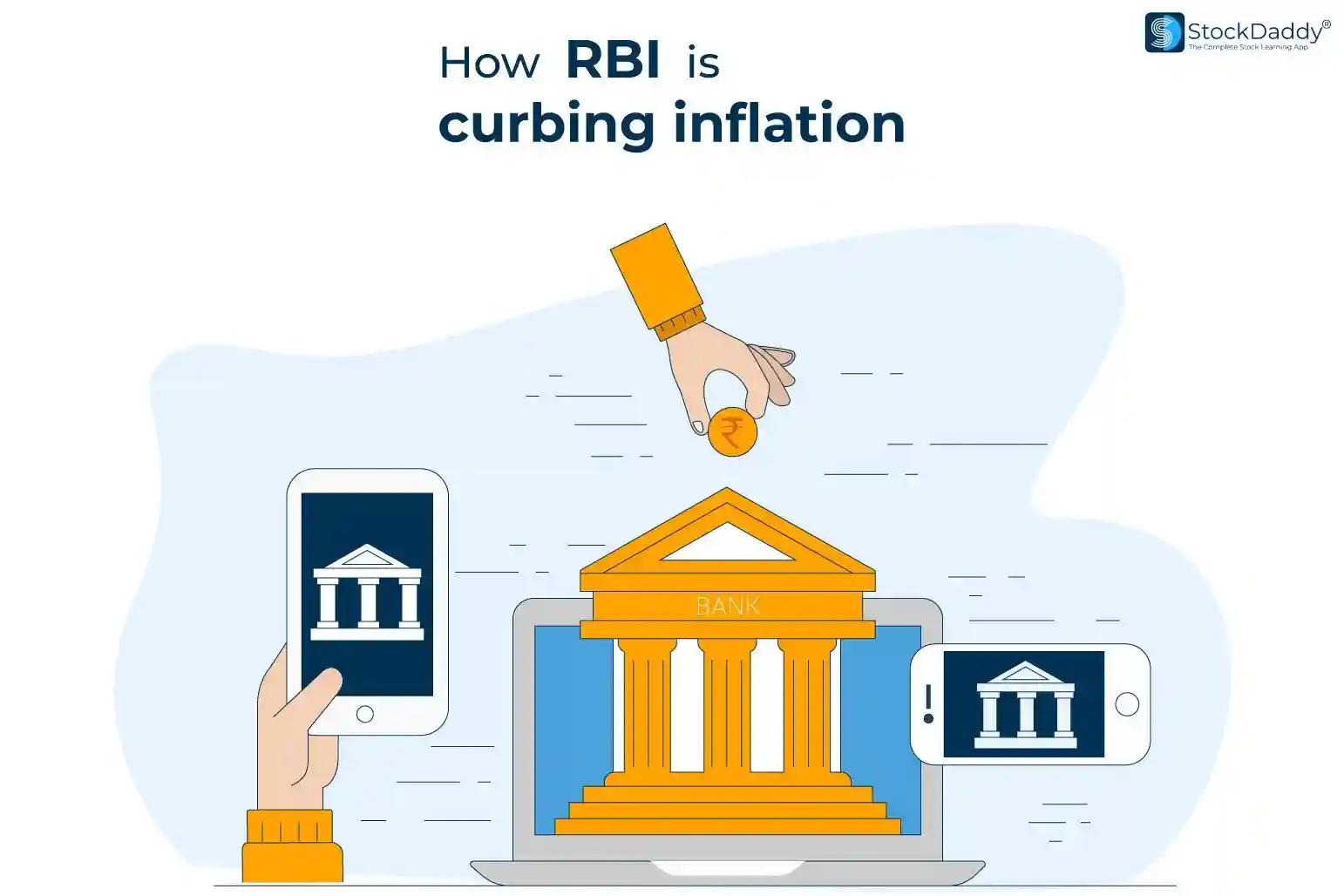Blog >
How RBI is Curbing Inflation
How RBI is Curbing Inflation

Amid the tightening monetary policies adopted by Central Banks across the world and an all-time low of the Rupee against the US Dollar, RBI has announced a 50bps rise in the repo rate, taking the interest rate to 5.9%.
RBI’s Monetary Policy Committee(MPC) headed by RBI governor Shaktikanta Das raised the Interest rate for the fourth consecutive time in the current financial year to 190bps since May in order to keep inflation under control and revive the falling Rupee.
Currently, the Inflation rate in India is hovering around 7%, and the Rupee is currently trading at 81.80 against the US Dollar leading to an increase in imports which is one of the major reasons for rising inflation in the country.
As you might know, the Reserve Bank of India recently raised its overnight repo rate by 40 basis points from 4% to 4.40 % and cash reserve ratio by 50 basis points from 4% to 4.5% with immediate effect in an attempt to curb the money flow in the market and tame inflation for a short period of time. I say for a short period of time because of the concept of money neutrality, which states that changes in interest rates cannot affect the economy's real variable, but can only affect it for a short period of time and in the long run the real output in the economy will be the same.
Aim of the RBI to raise interest rates-
The goals behind increase in interest rate are decrease in consumption level, money flow and increase in saving rate, because higher flow of money in the market leads to inflation.
Steps showing how repo rate (official rate) helps in controlling inflation:
- In the beginning, the Reserve Bank of India (RBI) raised the repo rate.
- After increasing the repo rate, banks will borrow less money from the RBI.
- As a result of this, the banks now have less money to lend to the customer.
- Therefore, banks will then increase the interest rate on lending.
- Due to high interest rates, customers reduce or stop taking loans, so that they do not have to pay the interest.
- Due to the above fact, if there is less money in the bank, customers will spend less money.
- As spending is less, demand for everything decreases as well.
- As a consequence, this is how inflation is controlled.
In order to understand monetary transmission, how it relates to inflation, and the role of central banks.
Let's first discuss what the monetary transmission mechanism is
The term monetary transmission refers to the process by which monetary policy decisions affect economic growth, prices, and other aspects of the economy for a short period of time. This is while the real variables of the economy remain unchanged.

Now let's break this definition pointwise with the reference of the above mentioned chart :
Official Rate:
Official rates, or repo rates, are the rates at which the Reserve Bank of India lends money to banks when they have a shortage of funds. Banks have to keep a certain amount of cash at hand at all times. In case, when banks don’t have much funds to maintain the limit, they borrow funds from the RBI at the current repo rate. Changes in official interest rates can have an effect on demand through multiple channels, as shown in the above chart.
So let’s dive into the effect of contractionary monetary policy (a rise in the interest rate that shrinks the economy) implemented through an increase in the policy rate.
- The short term lending rate of banks will hike when the policy rate hikes at the same pace. If the higher rate will decrease aggregate demand as the consumers bringing down credit purchase and business cut back on investment in upcoming projects.
- Bond prices, equity prices, and asset prices in general will decline as discount rates applied to future cash flows are increased. As a result, a decrease in the value of household assets may increase the saving rate while decreasing consumption.
- It is possible for both businesses and consumers to decrease their expenditures if their expectations of future economic growth decline.
- Foreign investment in debt securities may increase when interest rates increase, which could result in an appreciation of the domestic currency against foreign currencies. As the domestic currency appreciates, exports become more expensive in foreign currency, which can reduce demand for the country's exports.
Conclusion:
By accumulating all these effects act to decrease aggregate demand and put downward pressure on the price level. When there is any fall down in the policy rate it automatically affects the price level through the same channels, but in the inverse direction.

- Recent Blogs
- What is gold Bees ETF and How to invest in it?
- Difference Between Call and Put Option
- Types of Charts in Stock Market
- what is CPSE etf and How is it a good investment Opportunity
- What is Margin Trading Facility
- why Tata Motors Share is Falling?
- Disadvantages of SIP Investment You Should Know
- Can Stock Market make you Rich?
- Difference Between Sensex and Nifty
- Difference Between Fundamental Analysis and Technical Analysis